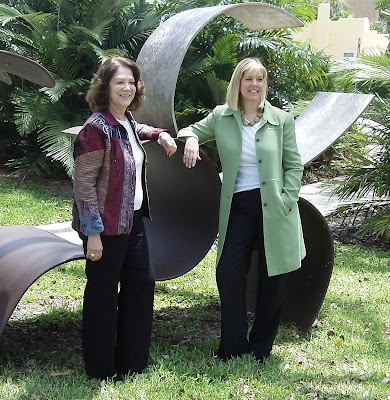By Gretel Sarmiento
This is about money, or rather, about the absence of it.
That’s what 80 executives representing cultural organizations from Palm Beach County heard at the State of the Arts meeting Monday at the Armory Art Center.
Turns out they are part of the problem and the solution.
Last fiscal year, Palm Beach County received $150,000 in arts money from the state in the form of six grants. If that seems bad, now it will take a miracle to get that from a state that only has $950,000 to give.
The proposed state budget for 2010-2011 exceeds $70 billion. When it comes to arts budgets per capita, Florida ranks 49th in the country, with 14 cents spent per Floridian. Next year, that will drop to 5 cents.
“To say this is a crisis is an understatement. It’s an embarrassment,” said Rena Blades, president and chief executive officer of the Palm Beach County Cultural Council, which has seen its revenue drop dramatically since 2008.
And yet, “there’s reason for some hope,” Blades said, referring to the fact that five consecutive months have registered high hotel occupancy. And a recent tourism stimulus program resulted in 341, 000 serious requests for information, which means outsiders are interested in visiting.
But it may take a while for the revenues to catch up with hotel occupancy.
In the meantime, Palm Beach County has 21 applications to the state for arts money, out of 250 statewide. Ideally, those arts groups would get everything they’re asking for – $19.1 million – but right now are praying to get just a piece of the less than $1 million available.
The state actually has dedicated $2 million for cultural grants, but of that amount $1 million is earmarked for the Lauderhill Performing Arts Center in Broward County − not yet built − and $50,000 for programs at Ocala’s Appleton Museum.
Just a few years ago, during the 2006-07 fiscal year, Florida had $34.4 million to distribute among cultural institutions all over the state. Then, it was spending 62 cents per capita on culture. Also that year, Palm Beach County received $4 million of that money for 44 arts institutions.
A lot has changed.
What’s even worse is what this does to people psychologically, said Sherron Long, president of the Florida Cultural Alliance. With such a small amount of money available, many groups just stop trying and don’t even bother to apply. They are understaffed, pressed for time, and focus on the present instead. It’s understandable, but problematic in the long run.
“When you don’t apply, the sense of demand goes down,” Long said.
Realistically, many organizations won’t see a cent from the state, but that doesn’t mean they shouldn’t try to be heard.
“You can’t give up just because it’s hard. We can’t be like, ‘OK, this is what we want,’ and expect it to be a smooth, straight line,” Long said.
One person who believes in being personally involved, if his organization can’t, is Joe Gillie, executive director of the Old School Square Cultural Arts Center in Delray Beach. On Monday, he gave Long a check for $200.
“I believe in what she is doing,” Gillie said. “She is one of the few voices we have left.”
Tricia Trimble, managing director of the Maltz Jupiter Theatre, feels like she hasn’t been as engaged as she would like to and it’s because of the heavy workload, particularly during season.
“I’m working 16 hours a day. I’m lucky if I can open an e-mail,” she said.
Right now, lawmakers don’t hear enough from board members, administrators and regular people, Long said. Politicians are in need of overwhelming and concrete evidence that the arts and culture are fundamental and that people still care, she said. That could be as simple as showing them a child’s smile.
“I don’t have excitement. I don’t have the students and the programs. You do that,” Long told the crowd Monday. “Policymakers have to experience that.”
